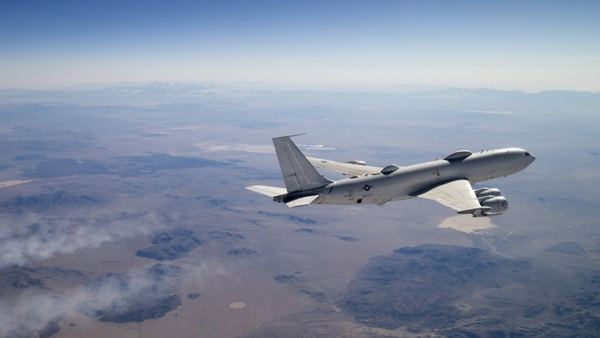In an opinion piece for the US magazine National Interest on Saturday, military expert Sébastien Roblin focused on the Boeing E-6 Mercury, the US Navy’s airborne command post and communications relay based on the Boeing 707-320. It took its maiden flight back in February 1987.
Even so, Roblin described the 46-metre-long aircraft as “America's deadliest plane ever”, recalling that the E-6 was designed to command the launch of land-based and sea-based nuclear ballistic missiles.
The author referred to the aircraft’s “sinister purpose”, which he noted was to provide the communication link between “the national command authority (starting with the president and secretary of defence) and US nuclear forces, even if ground-based command centres are destroyed by an enemy first strike".
“In other words, you can chop off the head of the US nuclear forces, but the body will keep on coming at you, thanks to these doomsday planes”, Roblin pointed out, adding that the E-6’s basic mission is known as TACAMO (Take Charge And Move Out).
By 1998, the E-6A aircraft was upgraded to the E-6B model, something that “expanded the Mercury’s capabilities by allowing it to serve as an Airborne Nuclear Command Post with its own battle staff area for the job”, according to Roblin.
Moments ago - A US Navy Boeing E-6B Mercury 163919 as ACARA22 passed over the Bay Area doing a long mission over the US! pic.twitter.com/c7Mk44u0WV
— CTP Watcher ✈️ (@WatcherCtp) March 22, 2020
He added that in this capacity, the plane serves “as a backup for four huge E-4 command post aircraft based on the 747 Jumbo jet”.
The E-6B is equipped with a system that helps the plane remotely keep an eye on Minuteman intercontinental ballistic missiles (ICMBs) using the Airborne Launch Control System.
Roblin pointed to the E-6B’s numerous on-board communication equipment which also enabled the plane to perform a spate of non-nuclear Command, Control, and Communications (C3) operations in Europe and the Middle East.
The E-6B fleet, which is based at the Tinker Air Force Base in Oklahoma, is currently operated by Two Navy Fleet Air Reconnaissance Squadrons that are in turn under the command of the US Navy's Strategic Communications Wing 1.
United States Navy Boeing E-6B Mercury departing PDX this morning as Vigor 36 pic.twitter.com/3cd5w6mbUV
— Sabian404 (@Sabian404) April 23, 2017
The author concludes the piece by calling for the E-6 platform to be in service until 2040 “thanks to a service-life extension programme and continual tweaks to its systems and radios”.
“While the Mercury has demonstrated its usefulness as an airborne communication hub for supporting troops in the field, the airborne command post will be considered a success if it never has to execute its primary mission”, Roblin stressed.


